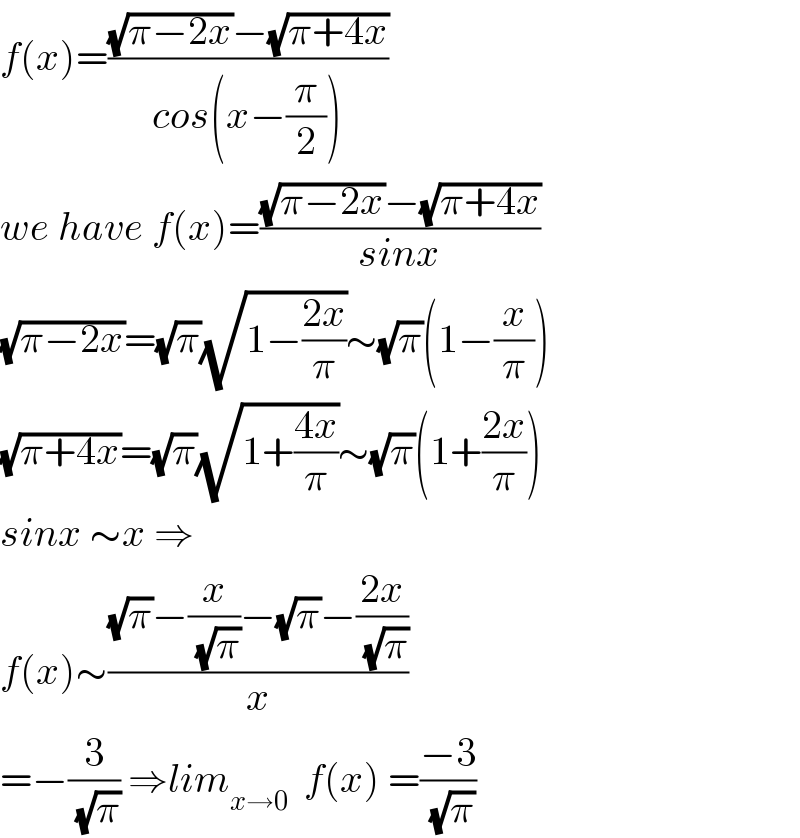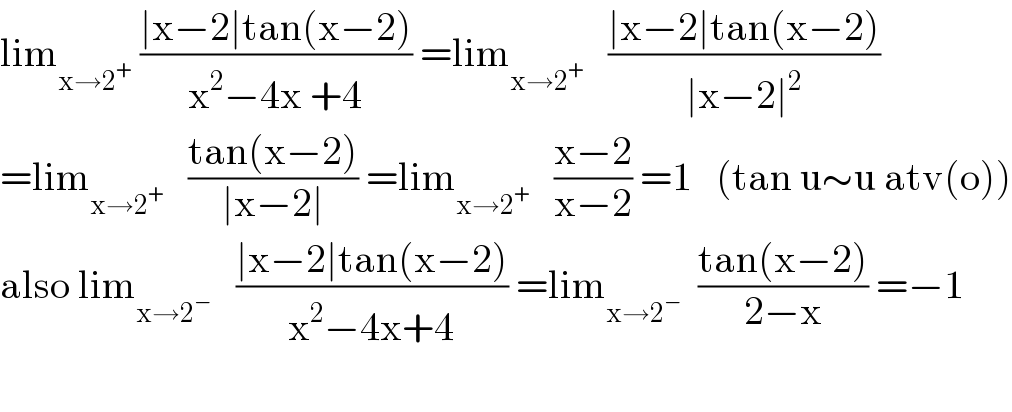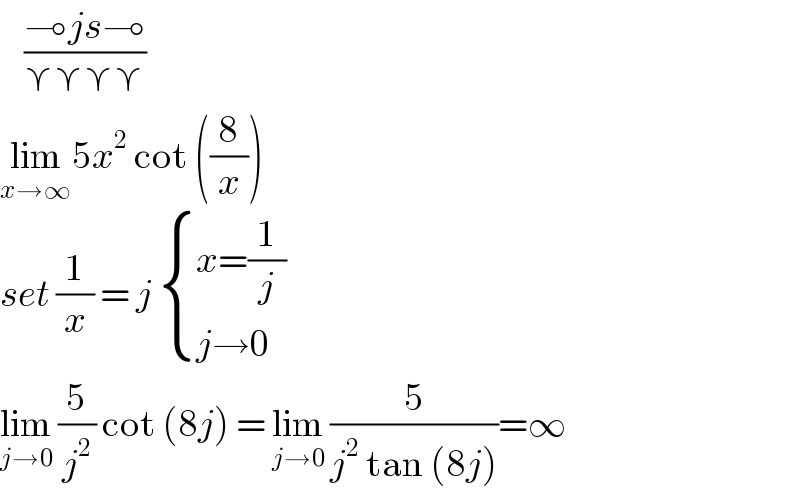
Question and Answers Forum
Question Number 109284 by bobhans last updated on 22/Aug/20

Answered by abdomsup last updated on 22/Aug/20

Answered by abdomsup last updated on 22/Aug/20

Answered by abdomsup last updated on 22/Aug/20

Commented by abdomsup last updated on 22/Aug/20

Answered by mathmax by abdo last updated on 22/Aug/20

Answered by mathmax by abdo last updated on 22/Aug/20

Answered by john santu last updated on 22/Aug/20

Answered by john santu last updated on 22/Aug/20

Commented by mathmax by abdo last updated on 22/Aug/20

Commented by john santu last updated on 22/Aug/20

Commented by mathmax by abdo last updated on 22/Aug/20
![S =Σ_(n=0) ^∞ ∫_n ^(n+1) (((−1)^([x]) )/(2+cos(n[x]))) dx =Σ_(n=0) ^∞ ∫_n ^(n+1) (((−1)^n )/(2+cos(nx)))dx =Σ_(n=0) ^∞ (−1)^n ∫_n ^(n+1) (dx/(2+cos(nx))) =Σ_(n=0) ^∞ (−1)^n u_n u_n =_(nx=t) ∫_n^2 ^(n^2 +n) (dt/(n(2+cos(t)))) =_(tan((t/2))=u) (1/n) ∫_(tan((n^2 /2))) ^(tan(((n^2 +n)/2))) ((2du)/((1+u^2 )(2+((1−u^2 )/(1+u^2 ))))) =(2/n) ∫_(tan((n^2 /2))) ^(tan(((n^2 +n)/2))) (du/(2+2u^2 +1−u^2 )) =(2/n)∫_(tan((n^2 /2))) ^(tan(((n^2 +n)/2))) (du/(u^2 +3)) =_(u=(√3)z) (2/n) ∫_((1/(√3))tan((n^2 /2))) ^((1/(√3))tan(((n^2 +n)/2))) (((√3)dz)/(3(1+z^2 ))) =(2/(n(√3))){arctan((1/(√3))tan(((n^2 +n)/2))) −arctan((1/(√3))tan((n^2 /2))} ⇒ S =(2/(√3))Σ_(n=0) ^∞ (−1)^n {arctan((1/(√3))tan(((n^2 +n)/2))−arctan((1/(√3))tan((n^2 /2))} rest to study convergence of this serie .....](Q109362.png)
Commented by mathmax by abdo last updated on 22/Aug/20

